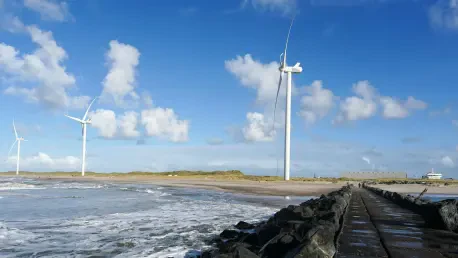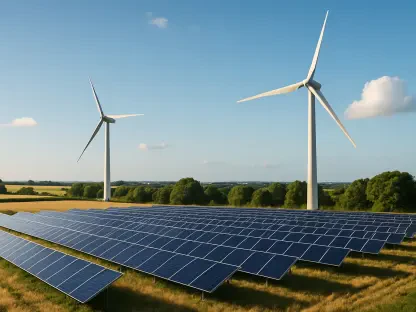In the heart of eastern Shasta County, California, a contentious battle over renewable energy development is reaching a critical turning point, as a proposed wind farm faces significant hurdles that could ultimately lead to its rejection. The Fountain Wind project, envisioned as a substantial contributor to the state’s clean energy goals, has stirred deep divisions between state ambitions and local priorities. With the California Energy Commission (CEC) poised to make a final decision, the recommendation from Executive Director Drew Bohan to deny approval has cast a shadow over the project’s future. This situation reflects a broader struggle across the nation, where the push for sustainable energy often collides with environmental concerns and community resistance. As the debate unfolds, the upcoming CEC meeting in Sacramento on December 19 promises to be a defining moment, not just for this initiative, but for how such conflicts might be resolved in the years ahead, highlighting the delicate balance between progress and preservation.
Environmental Concerns Take Center Stage
The Fountain Wind project, spearheaded by Texas-based ConnectGen, aims to erect 48 wind turbines across 4,500 acres in the Montgomery Creek-Round Mountain area, roughly 35 miles east of Redding. If realized, this ambitious setup would generate 205 megawatts of power, sufficient to energize approximately 80,000 homes, marking a significant step toward renewable energy targets. However, the environmental toll of such a large-scale development has emerged as a primary point of contention. A detailed assessment by CEC staff, released several months ago, concluded that the project’s ecological costs far outweigh its benefits, citing numerous significant and unavoidable impacts on the local ecosystem. This finding has been echoed by Bohan’s recent recommendation for denial, underscoring a growing consensus within the commission that the potential harm to natural resources and wildlife habitats cannot be justified, even in the name of clean energy advancement.
This environmental critique is not merely a bureaucratic hurdle but a reflection of deeper concerns about the irreversible damage that could be inflicted on Shasta County’s landscape. The area’s unique biodiversity and scenic value are at risk, with fears that construction and operation of the turbines could disrupt migratory patterns, degrade habitats, and alter the region’s natural beauty. Local stakeholders argue that while renewable energy is vital, it should not come at the expense of the very environment it seeks to protect. The CEC’s stance, grounded in extensive reviews and public input, suggests that alternative locations or technologies might better serve the state’s goals without such severe trade-offs. As the decision date approaches, this focus on environmental preservation continues to dominate discussions, raising questions about how California can meet its ambitious climate targets while safeguarding its natural heritage from unintended consequences.
Local Resistance and Autonomy in Focus
Shasta County’s opposition to the Fountain Wind project has been both vocal and resolute, with residents and officials uniting to protect their land, safety, and way of life from what they perceive as an intrusive development. Back in October of a previous year, the Shasta County Board of Supervisors decisively rejected the proposal after an exhaustive public comment session that stretched over 10 hours, reinforcing an earlier denial by the county Planning Commission. Despite this clear local stance, tensions escalated when state legislation in subsequent years granted the CEC the power to override such decisions, igniting a fierce debate over local autonomy versus state authority. The county has since invested around $55,000 in a media campaign to rally against the wind farm and joined forces with the Pit River Tribe in a legal challenge against the state, signaling a profound commitment to defending community interests.
This resistance is more than a reaction to a single project; it embodies a broader struggle for local control in the face of state-driven renewable energy agendas. Board of Supervisors Chair Kevin Crye has publicly hailed the CEC’s critical assessment as a triumph for the community, reflecting a shared belief that decisions impacting local landscapes should prioritize the voices of those most affected. The clash highlights a fundamental rift in how energy policy is implemented, with many in Shasta County feeling that their concerns about quality of life and environmental integrity are being sidelined by distant policymakers. As the CEC prepares for its pivotal meeting, accessible both in person at the California Natural Resources Building and via Zoom, the outcome could set a precedent for how much weight local opposition carries in future renewable energy disputes, potentially reshaping the dynamics between state mandates and grassroots movements.
Balancing Renewable Goals with Community Impact
The Fountain Wind saga encapsulates a critical tension in California’s aggressive pursuit of clean energy—a clash between the urgent need for sustainable power and the equally pressing need to mitigate community and environmental fallout. On one hand, the project promises a substantial boost to the state’s renewable portfolio, aligning with broader climate objectives that prioritize reducing carbon emissions over the coming years. On the other hand, the consensus among local stakeholders and the CEC’s leadership leans heavily toward rejection, driven by fears of irreversible harm to the region’s ecological balance and cultural fabric. Bohan’s recommendation, rooted in a meticulous evaluation of the application and extensive feedback, points to a likely denial, though the final verdict remains pending until the commission’s gathering.
Looking back, the unfolding narrative around this wind farm reveals how deeply contested the path to a greener future can be when economic benefits are weighed against local priorities. The decision-making process underscores the importance of thorough environmental reviews and public engagement in shaping energy policy. Moving forward, the resolution of this case could influence how similar projects are approached, urging policymakers to explore innovative solutions that minimize ecological disruption while advancing renewable goals. Whether through alternative sites, scaled-down proposals, or enhanced community consultation, the next steps must strive to bridge the gap between state ambitions and local realities, ensuring that the drive for sustainability does not leave lasting scars on the landscapes and lives it aims to protect.









